“Rolled on the thighs of virgins.”
Think of Cuban cigars and you may just want to close your eyes and propagate that myth or fantasy. But if you’re a novice to the enjoyment of Cubans, and by that I mean Cuban cigars, Samuel Spurr’s Cigar Appreciation Seminar takes you on a journey from the tobacco plant to the roller’s table as you puff on a Montecristo No. 4 and sip on La Bodeguita’s famous Mojito.
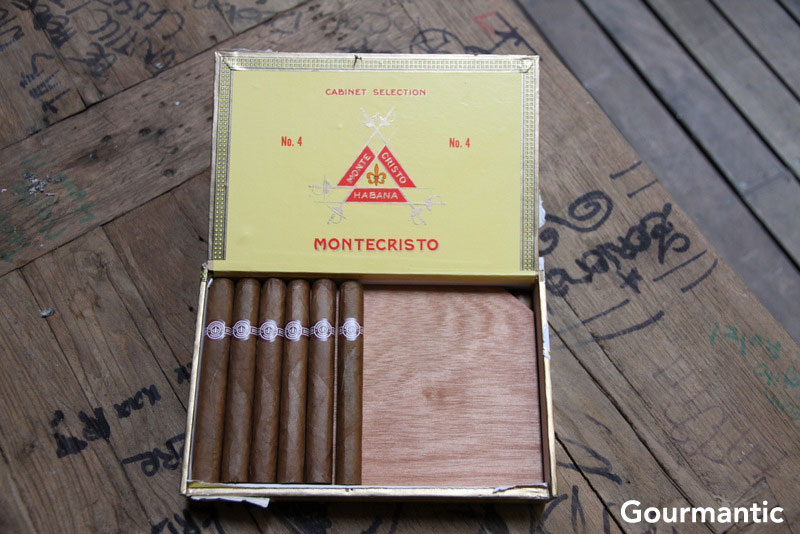
Montecristo No. 4 – Habana
Sam is a freelance PR, a cigar feature writer and he knows his Cubans. He’s been smoking them for ten years and his cigar articles have been featured in Cigar Journal and on his site, Inlumino Cigar News Australia.
The seminar takes place on the balcony of La Bodeguita del Medio where a group of enthusiasts are gathered to learn about cigar basics.
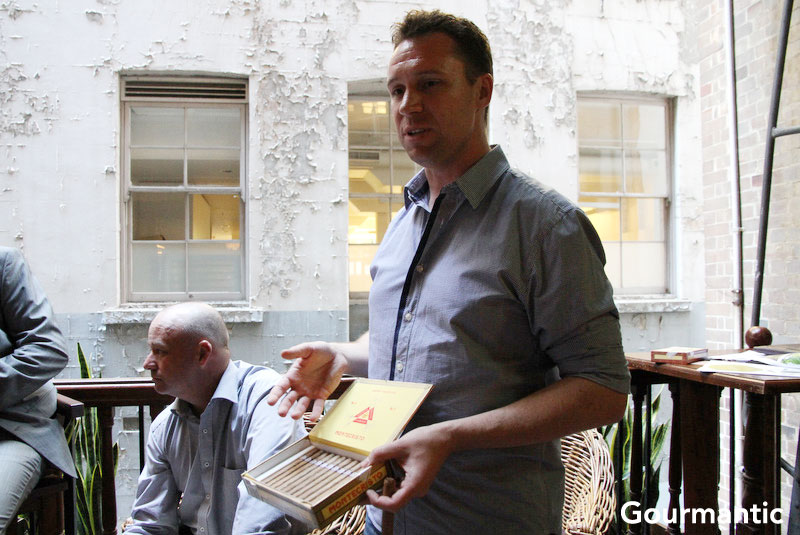
Samuel Spurr
In Cuba, tobacco plants are planted in September and by January/February, they are ready for harvesting. The plants can grow up to 6 feet tall; their buds are pinched off the top in order to accelerate growth. Growing them under shade cloths to stop direct sunlight allows the leaves to grow finer which are used for the wrapper part of the cigar.
The tobacco plant has three main leaf ‘sections’. Ligero, the leaves closest to sun, are the strongest leaves which gives a cigar a strong flavour, Seco, the middle of the plant, is medium-bodied in flavour, while Volado at the bottom is the weakest and lightest tobacco. A masterblender brings the three parts of a cigar: the filler, binder, and wrapper together using some or all of these leaves to create a cigar.
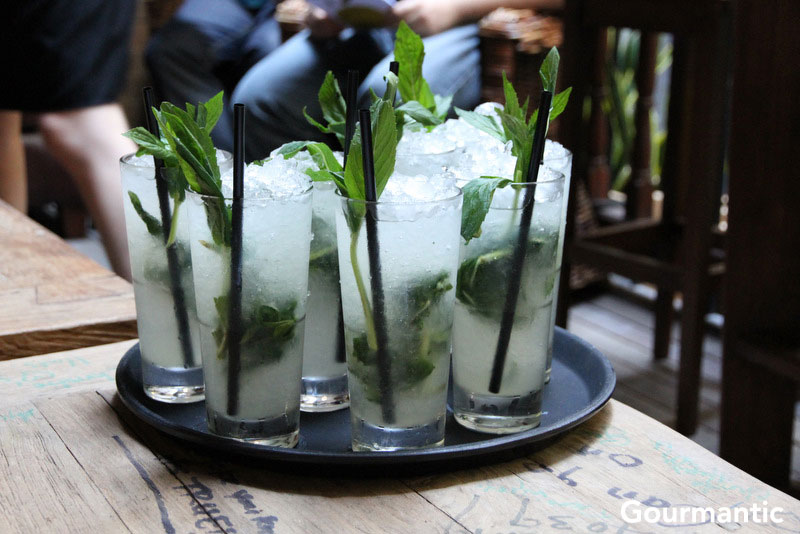
Mojito
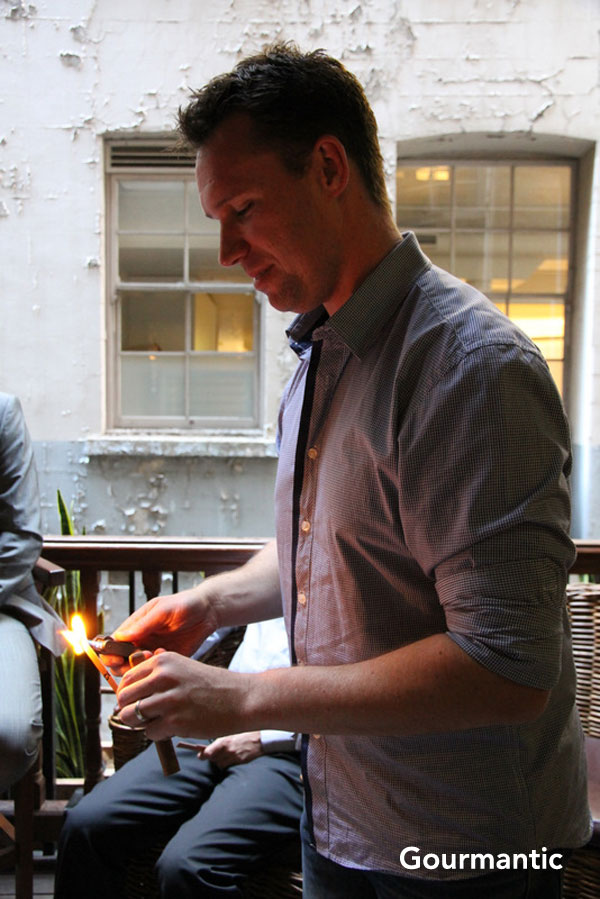
Once harvested, the leaves are sorted into top, bottom and middle of the plant for the blending process that follows. Leaves on top of the plant have a much stronger taste while other parts give the cigar give a balance to the flavour. After the leaves are picked, they are hung to be air cured for approximately 1 to 2 months which allows the chlorophyll to leave the plant. Then they are stacked into bulks for fermentation. Moisture encourages the leaves to rot and allows tobacco to ferment. They are rotated to prevent rotting and once fermented, the leaves are baled for ageing for a minimum of 2 years, which is the standard for Cubans.
Once aged in bails, they are completely dry and subsequently they are taken to a sauna room where high humidity restores moisture to tobacco. Master blenders then blend the various components and cigar rollers are instructed in which wrapper filler and tobacco content to use.
A good cigar wrapper can roll up to 150 cigars per day. Cigar rolling is a full time job performed predominately by women. Often there are crèches at work to enable them to work and attend to their children.
Once cigars are rolled, they are categorised according to ring size and length. There are 64 ring sizes to the inch, for example, a ring size of 40 is 40/64th in diameter. Cigars are given names according to size where a Corona is 5.5” x 42, a Churchill is 7” x47 and a Giant is 9” x 52.
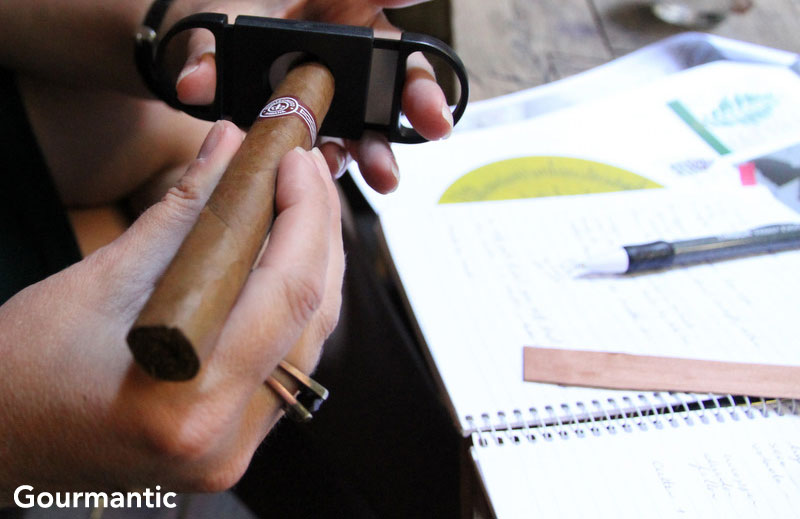
Cigar cutter
There are various cigar cutters from the guillotine to the scissors type cutters to the punch cutters which produce a round hole in cigar.
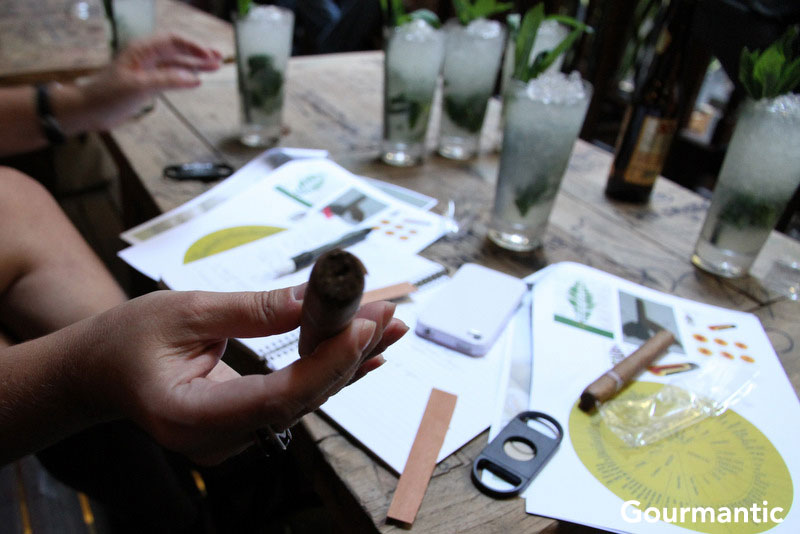
Cut cigar
The traditional way of lighting a cigar is to use cedar. The trick is not to let the flame to touch the cigar directly, just warm it up once it’s lit then take a few puffs.
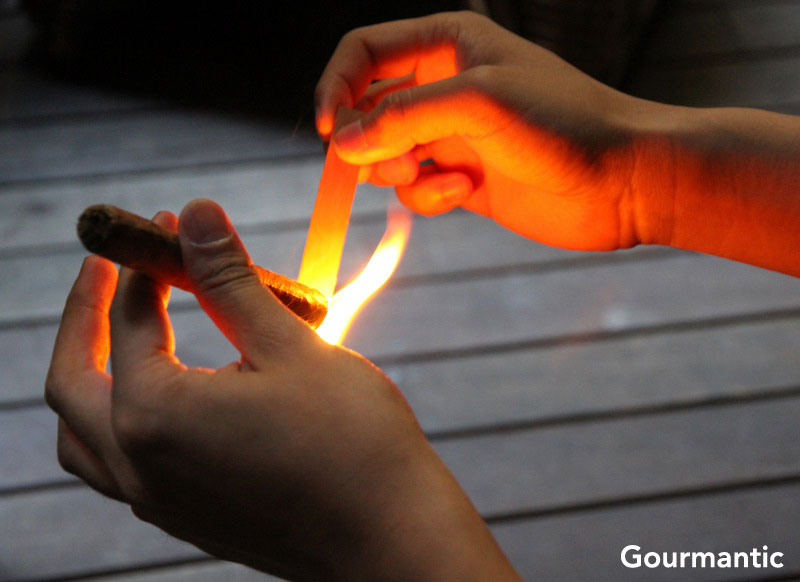
Lighting a cigar with cedar
One of the most important things learnt from the seminar is that cigar flavours are very subjective. A flavour wheel can assist in identifying major flavours such as spicy, woody, fungal, earthy, mineral, even horse manure.
Cigars are often matched with spirits, much like the Baranows Cigar and Spirit event, we have the opportunity to try the cigar with Diplomatico Rum Reserva Exclusiva, a rum that complements the cigar far better than the Mojito.
The seminar continues with information on storing, reviewing and ageing cigars and ends with a question and answer session while everyone is puffing on their Montecristo No. 4.
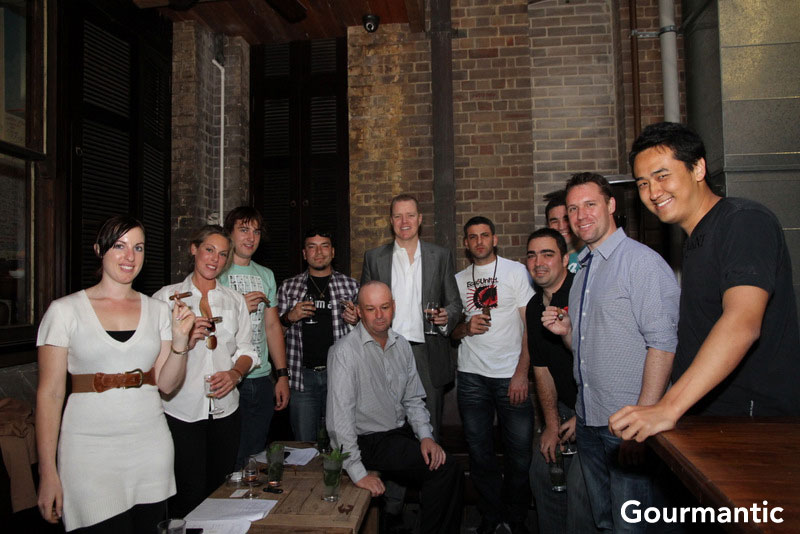
Our group on the balcony of La Bodeguita
If you’re new to cigars, or want to refresh your knowledge in an intimate and relaxed setting, you’ll enjoy the session and leave with an appreciation for the craft that goes into cigar making.
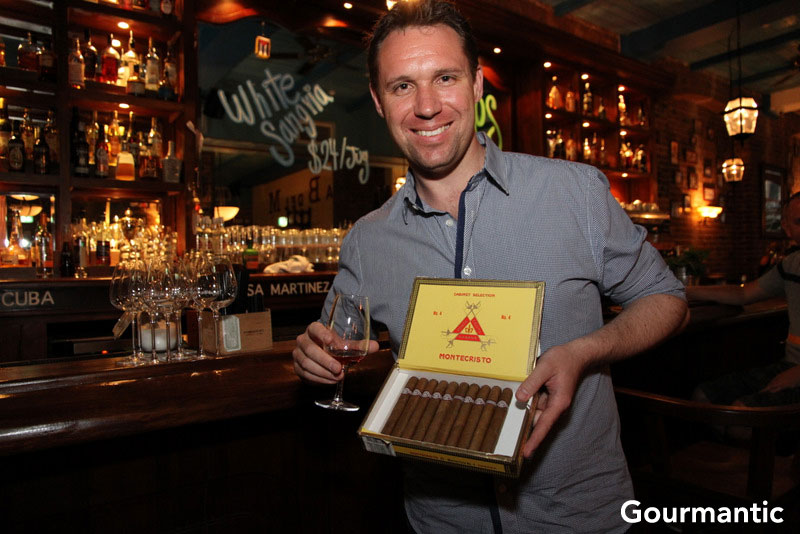
Sam Spurr at La Bodeguita’s Bar
The first Cigar Appreciation Seminar was held on Tuesday 15 November 2011 at Sydney’s La Bodeguita del Medio. Due to popular demand, a second seminar will be held on Tuesday 6 December 2011 from 6-7 pm. Tickets are $40 and include a Cuban cigar and Mojito on arrival.
Samuel Spurr – Inlumino Communications
www.inluminocomms.blogspot.com






Sounds like it’s pitched at the right level for a beginner or a refresher. Interesting facts about the tobacco plant.
Agreed! I never gave it much thought before. It does make you appreciate what goes into making a cigar.
I’ve never smoked a cigar but this might twist my arms a little… Interesting facts and good to see women interested in cigars!
There were a few women, and they were quite keen to learn. I’m not a smoker, but the odd cigar every so often is a small indulgence.
I will be hosting more cigar master classes in early 2012 for those of you who are keen. If you are interested in attending a session next year, please feel free to drop me a line info@inlumino.com.au
Cheers
Sam
[…] Remarkable experiences with spirits included the ABSOLUT TUNE Launch, the José Cuervo Tequila Tasting with Don Francisco Hajnal, Hendricks Gin with Jon Muir, and Maker’s Mark Bourbon at Rochefort. We revelled at drink events such as Barshow Week, Cocktail Island and the Time Out Bar Awards. We even dabbled in Cuban cigars at the Baranows Emporium Cigar and Spirit Matching and Cigar Appreciation with Inlumino’s Sam Spurr. […]
[…] Rum. It’s very smooth, it hits the spot. Whenever I have single malt I think about having a cigar with it, but I never do. [laughs] It gets me into all sorts of […]